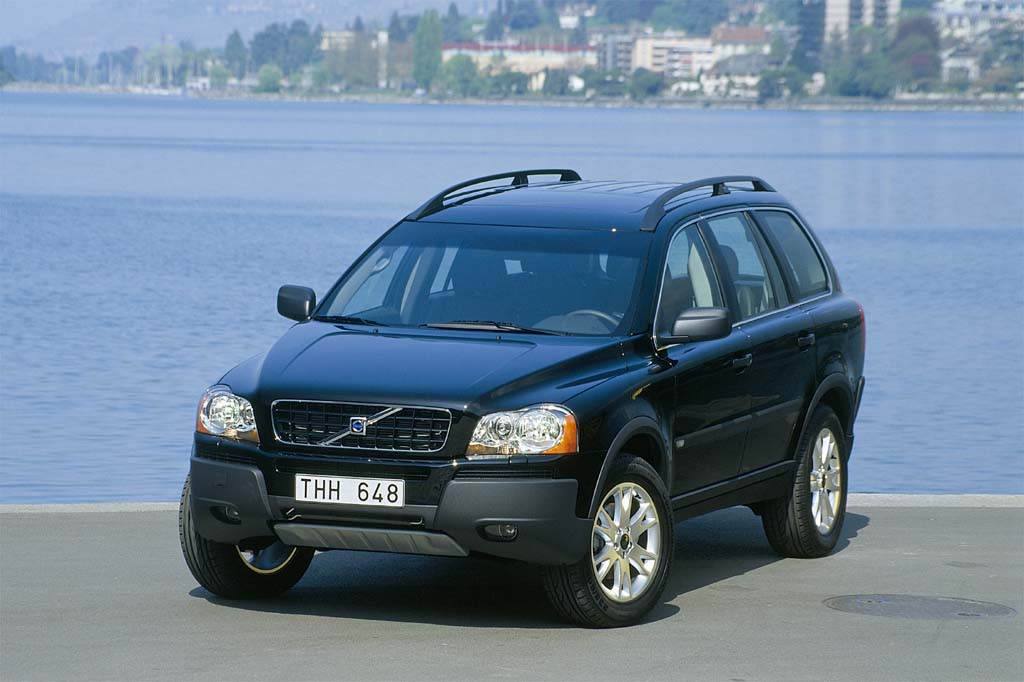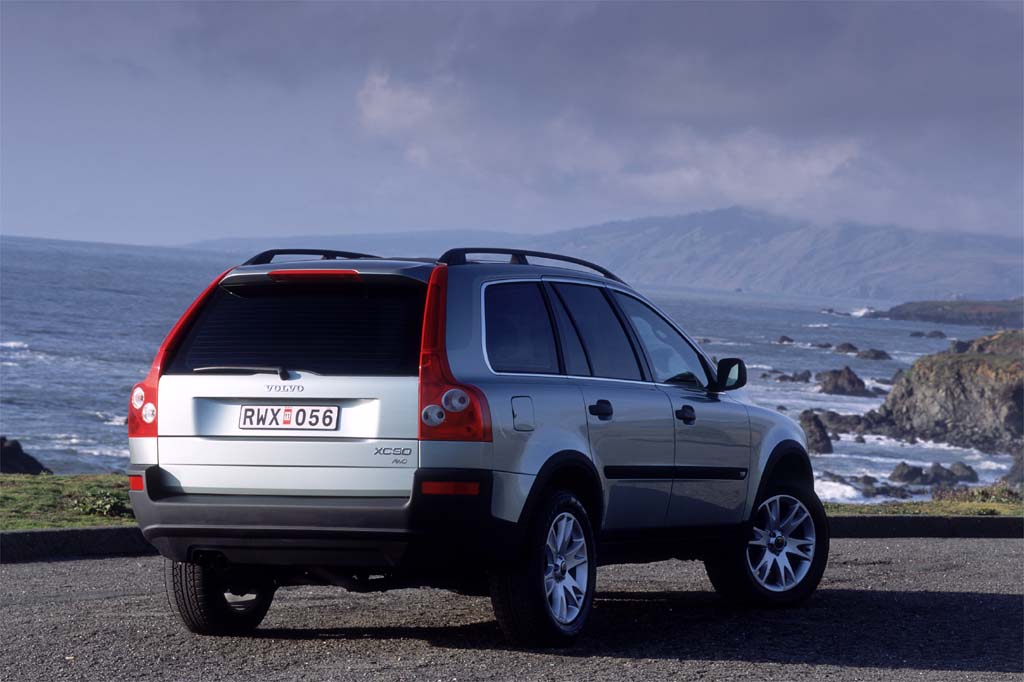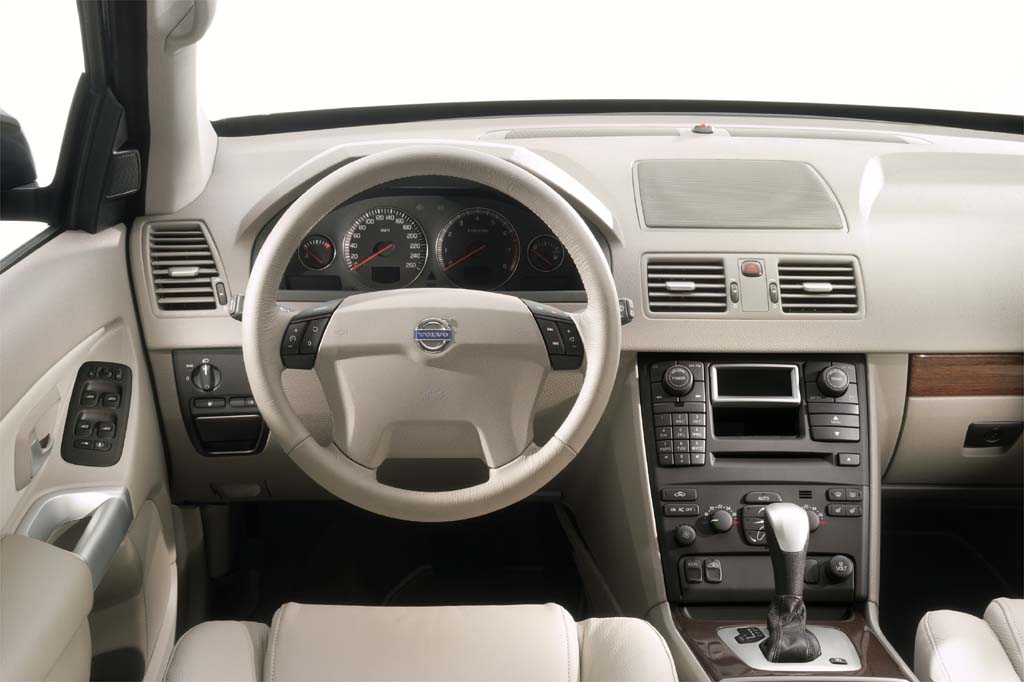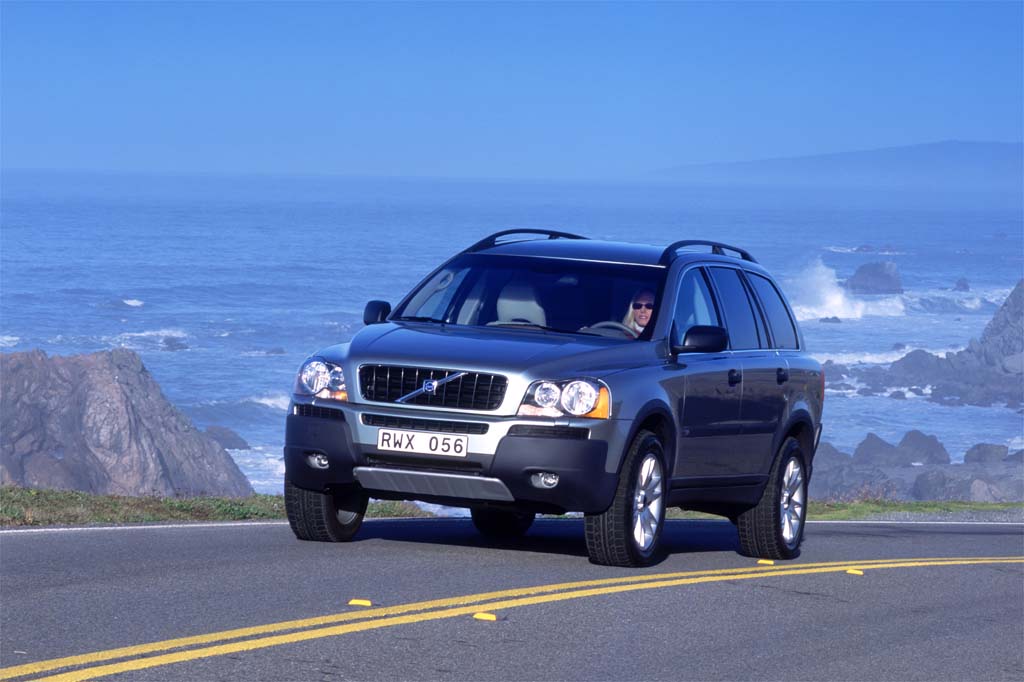| Premium midsize SUV; Built in Sweden |
|
|
| Good condition price range: $3,000 – $36,400* |

2003 Volvo XC90

2003 Volvo XC90

2003 Volvo XC90

2003 Volvo XC90
| Pros: |
|
| Cons: |
|
Volvo fans got an SUV to call their own, but most any buyer would approve of the XC90’s carlike road manners, rock-solid feel, solid workmanship, and numerous safety features. Relatively weak acceleration of non-V8 models is a drawback, and the five-cylinder engine’s level of refinement disappoints. Handling-conscious buyers may wish for firmer steering. Prices might tempt MDX or RX intenders, and even some six-cylinder BMW X5 and Mercedes M-Class shoppers.
Overview
Sized and priced to compete with the Acura MDX and Lexus RX 300, Volvo’s first sport-utility vehicle was based on the company’s S80 sedan platform. Built in Sweden, the XC90 was a four-door unibodied wagon with turbocharged power and a choice of five-passenger seating or space for seven with an available third-row bench. A combination rear liftgate with smaller, drop-down tailgate panel was standard.
The entry-level 2.5T came with front-wheel or all-wheel drive, a 208-horsepower five-cylinder engine, and five-speed automatic transmission. The T6 AWD had a 268-horsepower six-cylinder engine and a four-speed automatic. Both transmissions incorporated a manual shift gate. XC90’s AWD lacked low-range gearing and wasn’t intended for severe off-road use.
All models included antilock four-wheel disc brakes, traction/antiskid control, and Volvo’s new Roll Stability Control, which was designed to activate the antiskid system to reduce the chance of a rollover if sensors detected unusually rapid or severe body lean. Also standard were front torso side airbags and curtain side airbags, covering front- and second-row seats. The third-row seat was part of the optional Versatility Package, which also included curtain-airbag coverage for the third row, a load-leveling rear suspension, and third-row air conditioning and audio controls.
XC90’s second-row bench was split 40/20/40 and offered an optional integrated child booster seat for its middle section. All three sections slid fore and aft. Every XC90 had wood interior trim. Leather upholstery was optional on the 2.5T and standard for the T6. The T6 also added a sunroof, in-dash CD changer to replace a single-disc player, power passenger seat, and 17-inch wheels substituting for 16s. Those items also were available for 2.5Ts. Other options included rear-obstacle detection, navigation system, heated front seats, and for the T6, 18-inch wheels. Rivals included the Acura MDX and Lexus RX 330, and later, the Cadillac SRX.
Yearly Updates
| 2004 XC90 Restyled 17-inch wheels, an optional leather-wrapped gearshift knob, and a keyfob with integrated remote locking were among the few revisions for 2004. |
| 2005 XC90 Volvo’s first-ever V8 engine became available for the XC90, and would soon replace the T6’s six-cylinder. The V8’s six-speed automatic transmission had a manual shift gate. Every V8 model had all-wheel drive. |
| 2006 XC90 Volvo offered 2.5T and V8 models in 2006; the six-cylinder T6 was gone. Standard with the V8, a third-row seat was otherwise part of a Versatility option package. Seven-passenger versions had a rear load-leveling suspension, plus third-row climate and audio controls. |
| 2007 XC90 A revamped base version, new options, cosmetic tweaks, and a new model highlighted this car-type SUV for 2007. XC90 seats up to seven and came in three models. For 2007, the base version was called the 3.2. It had a 235-hp inline 6-cyl engine and replaced the 2.5T model, which had a 208-hp turbocharged 5-cyl. The V8 model returned with 311 hp. New for ’07, the Sport model added unique trim, sport suspension and 19-inch wheels to the V8. |
| 2008 XC90 The 2008 Volvo XC90 got minor trim changes. The Sport model added unique interior and exterior trim, sport suspension, and 19-inch wheels in place of 18s. Newly standard for all models was an auto-dimming rearview mirror. |
| 2009 XC90 The 2009 Volvo XC90 shuffled its model lineup. The 3.2 and new-for-2009 3.2 R-Design had a 235-hp 3.2-liter 6-cylinder engine. The V8 and new-for-2009 V8 R-Design had a 311-hp 4.4-liter V8. The Sport model was dropped. V8 models were available with a new Executive Package, which included upgraded upholstery, heated and cooled front seats with massage, and specific trim. |
| 2010 XC90 The 2010 Volvo XC90 has a revised model roster and some new standard features. The V8 R-Design has been discontinued. Newly standard on the 2010 XC90 3.2 are a 3rd-row seat, integrated 2nd-row child booster seats, rear-obstacle detection, and leather upholstery. |
| 2011 XC90 The 2011 Volvo XC90’s base 3.2-liter six gained five horsepower to 240. |
| 2012 XC90 The V8 model was discontinued, but there were no other changes of note to the 2012 Volvo SC90. |
| 2013 XC90 For 2013, Volvo subtly tweaked the XC90’s interior and exterior styling. |
| 2014 XC90 Changes for the 2014 XC90 were minor and included a folding front passenger seat on some trim levels. |
